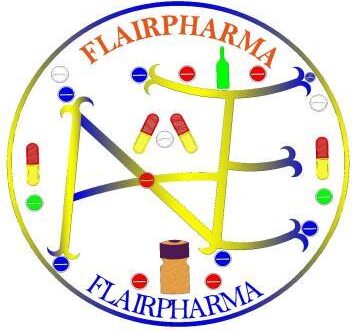Prokaryotic and Eukaryotic Microorganisms are fundamental to life on Earth, playing critical roles in ecosystems, industries, and human health. They are classified into two primary categories based on cellular structure: prokaryotic and eukaryotic microorganisms. These two groups exhibit profound differences in their organization, genetic material, reproduction, and metabolism. Understanding these distinctions provides insight into microbial evolution, diversity, and applications.

1. Definition and Overview
| Feature | Prokaryotic Microorganisms | Eukaryotic Microorganisms |
|---|---|---|
| Definition | Microorganisms lacking a membrane-bound nucleus and organelles. | Microorganisms with a membrane-bound nucleus and organelles. |
| Examples | Bacteria and Archaea | Protists, Fungi (Yeasts, Molds, Protozoa, Algae) |
Prokaryotic microorganisms are simpler in structure, while eukaryotic microorganisms have more complex cellular organization.
2. Cellular Structure
2.1 Nucleus and Genetic Material
- Prokaryotic Microorganisms: Lack a true nucleus. Their DNA is found in a region called the nucleoid, which is not enclosed by a membrane.
- Eukaryotic Microorganisms: Possess a well-defined nucleus, where DNA is enclosed by a nuclear membrane.
2.2 DNA Organization
| Feature | Prokaryotes | Eukaryotes |
|---|---|---|
| DNA Structure | Circular DNA | Linear DNA |
| Chromosome Number | Single | Multiple |
| Histones | Absent (except in Archaea) | Present |
Eukaryotic microorganisms have more sophisticated genetic regulation due to histone proteins and chromatin organization.
3. Cell Organelles
Prokaryotic and eukaryotic microorganisms differ significantly in their organelles:
| Organelle | Prokaryotic Microorganisms | Eukaryotic Microorganisms |
|---|---|---|
| Mitochondria | Absent | Present |
| Endoplasmic Reticulum (ER) | Absent | Present (Rough & Smooth) |
| Golgi Apparatus | Absent | Present |
| Lysosomes & Peroxisomes | Absent | Present |
| Chloroplasts | Absent (some have photosynthetic membranes) | Present in photosynthetic protists and algae |
Since prokaryotic microorganisms lack organelles, their metabolic reactions occur in the cytoplasm or on the plasma membrane. In contrast, eukaryotic microorganisms use organelles for compartmentalized functions.
4. Ribosomes and Protein Synthesis
- Prokaryotic Microorganisms: Contain 70S ribosomes, which are smaller and simpler.
- Eukaryotic Microorganisms: Contain 80S ribosomes, which are larger and more complex.
This difference is crucial in medical applications, as many antibiotics target 70S ribosomes, inhibiting bacterial protein synthesis without harming human cells.
5. Cell Wall Composition
| Microorganism Type | Cell Wall Composition |
|---|---|
| Bacteria | Peptidoglycan |
| Archaea | Pseudopeptidoglycan or other polymers |
| Fungi (Eukaryotic) | Chitin |
| Algae (Eukaryotic) | Cellulose |
| Protozoa (Eukaryotic) | No cell wall |
This variation in cell wall composition is significant for antimicrobial drug design and evolutionary adaptations.
6. Reproduction
6.1 Asexual Reproduction
- Prokaryotic Microorganisms: Reproduce via binary fission, a simple process where a single cell divides into two identical cells.
- Eukaryotic Microorganisms: Reproduce via mitosis, a more complex form of cell division.
6.2 Sexual Reproduction
- Prokaryotes: Do not undergo true sexual reproduction but exchange genetic material through conjugation, transformation, or transduction.
- Eukaryotes: Undergo meiosis, producing gametes or spores that lead to genetic variation.
The presence of sexual reproduction in eukaryotic microorganisms contributes to greater adaptability and evolution.
7. Metabolism and Energy Production
| Feature | Prokaryotic Microorganisms | Eukaryotic Microorganisms |
|---|---|---|
| ATP Production | Occurs in plasma membrane | Occurs in mitochondria |
| Metabolic Diversity | Highly diverse (aerobic, anaerobic, photosynthetic, chemosynthetic) | Less diverse (primarily aerobic) |
Prokaryotic microorganisms display greater metabolic diversity, allowing them to thrive in extreme environments such as deep-sea hydrothermal vents and acidic hot springs.

8. Motility and Locomotion
| Structure | Prokaryotic Microorganisms | Eukaryotic Microorganisms |
|---|---|---|
| Flagella | Simple structure, made of flagellin | Complex structure, made of tubulin |
| Cilia | Absent | Present (e.g., in some protozoa) |
| Pseudopodia | Absent | Present in amoeboid movement |
Eukaryotic microorganisms use cilia and pseudopodia for movement, whereas prokaryotic microorganisms rely on simple flagella.
9. Size Differences
| Feature | Prokaryotes | Eukaryotes |
|---|---|---|
| Cell Size | 0.1 – 5 µm | 10 – 100 µm |
Eukaryotic microorganisms are generally larger due to their complex internal structures.
10. Evolutionary Perspective
- Prokaryotic microorganisms are believed to be the earliest life forms on Earth, dating back over 3.5 billion years.
- Eukaryotic microorganisms evolved later through endosymbiosis, where ancient prokaryotic cells were engulfed to form mitochondria and chloroplasts.
11. Importance in Biotechnology and Medicine
| Field | Prokaryotic Microorganisms | Eukaryotic Microorganisms |
|---|---|---|
| Antibiotic Production | Bacteria (e.g., Streptomyces) | Fungi (e.g., Penicillium) |
| Fermentation | Bacteria (e.g., Lactobacillus) | Yeasts (e.g., Saccharomyces) |
| Genetic Engineering | Used in recombinant DNA technology | Used in pharmaceutical production |
| Pathogens | Bacteria (e.g., E. coli, Salmonella) | Fungi (e.g., Candida), Protozoa (e.g., Plasmodium) |
Both types of microorganisms have extensive applications in medicine, industry, and environmental sustainability.
Conclusion
Prokaryotic and eukaryotic microorganisms represent two distinct domains of life, each with unique structural, functional, and evolutionary characteristics. While prokaryotic microorganisms are smaller, simpler, and more metabolically diverse, eukaryotic microorganisms exhibit greater complexity, compartmentalization, and adaptability. These differences are fundamental to understanding microbial ecology, disease mechanisms, and biotechnological innovations.
By studying the contrasts between these microorganisms, scientists continue to unlock new discoveries that shape the future of medicine, industry, and environmental science.
